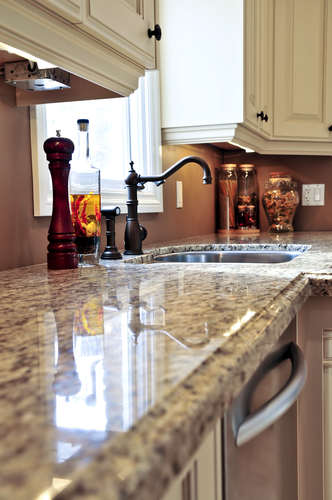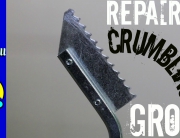 Choosing a Stone Counter Top – Granite, Quartz or Marble? So, you are ready to upgrade to solid-surface stone counter tops in your kitchen. Three of the most popular types are granite, quartz, or marble. What is the difference between them, anyway?
Choosing a Stone Counter Top – Granite, Quartz or Marble? So, you are ready to upgrade to solid-surface stone counter tops in your kitchen. Three of the most popular types are granite, quartz, or marble. What is the difference between them, anyway?
Here is some information about these surfaces, and some pros and cons of each:
Granite – Slab stone that is cut from a larger stone.
- Pros: Very popular for good reason, granite comes in a choice of colors, and is the most durable of the stone surfaces. It is also the most stain and scratch-resistant of the 3 types of stone.
- Cons: Granite does need to be sealed, and then re-sealed periodically (but not terribly often). Also, because it is so heavy, you need to make sure that your cabinetry is durable enough to support its weight.
Quartz – A “natural” fabricated stone that is created from pieces of natural quartz stone, held together with a resin.
- Pros: Because color can be added during the fabrication of the stone, it comes in the widest choices of colors. It also is quite durable and does not need sealing. It can be cleaned with a sponge and warm water.
- Cons: It is on the expensive side, considering that it isn’t slab stone. It also has a less natural look, which may be undesirable for some.
Marble – Slab marble, often white with gold-ish streaks
- Pros: Marble is the queen of counter top surfaces for bakers and pasta-makers. It is a naturally beautiful surface, and gives a kitchen a luxuriously classic look, which is highly desirable for some.
- Cons: Marble needs to re-sealed frequently (at least twice a year),and it can chip fairly easily. It is also the least scratch-resistant of the surfaces. Many people opt to install marble in just one area for baking and working with dough, rather than the whole kitchen.
Hopefully this information will help you to select the perfect stone surface for your kitchen counter top!
by See Jane Drill, Copyright 2014, All Rights Reserved







Leave A Comment